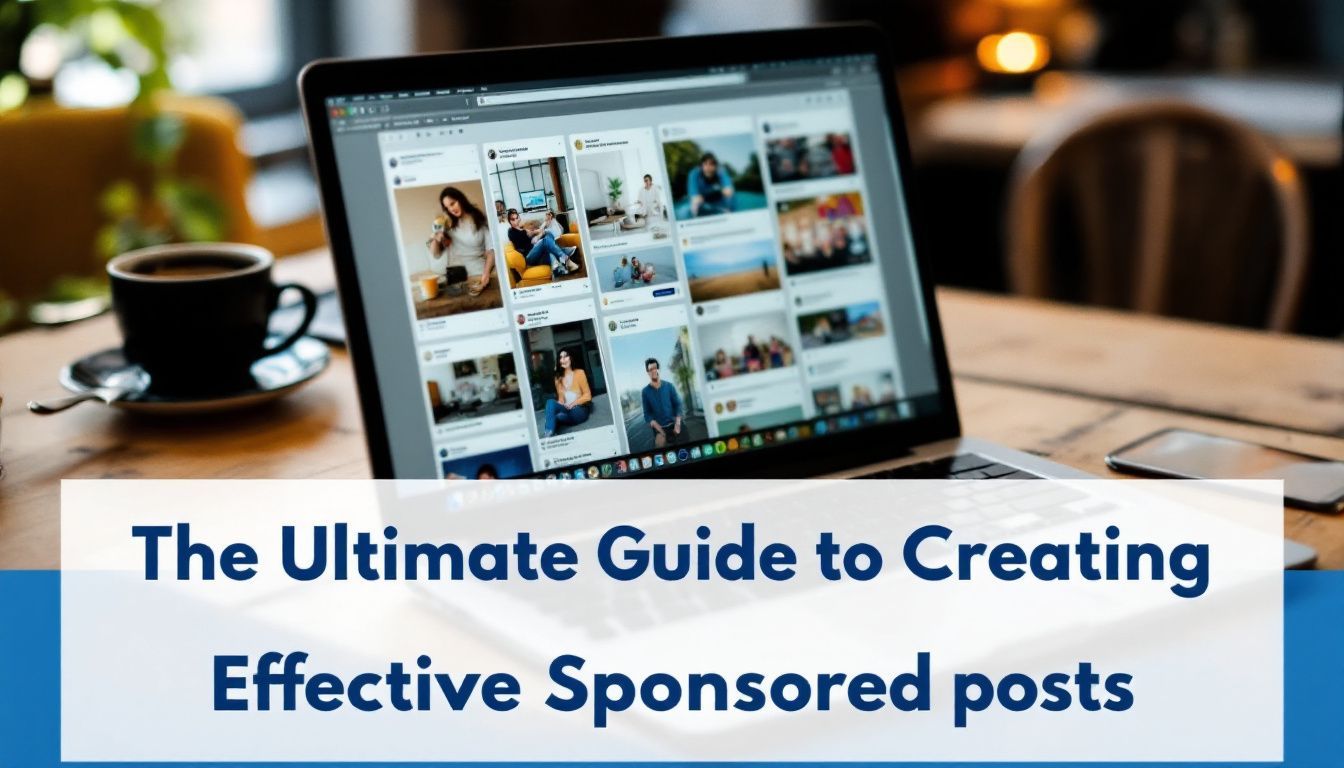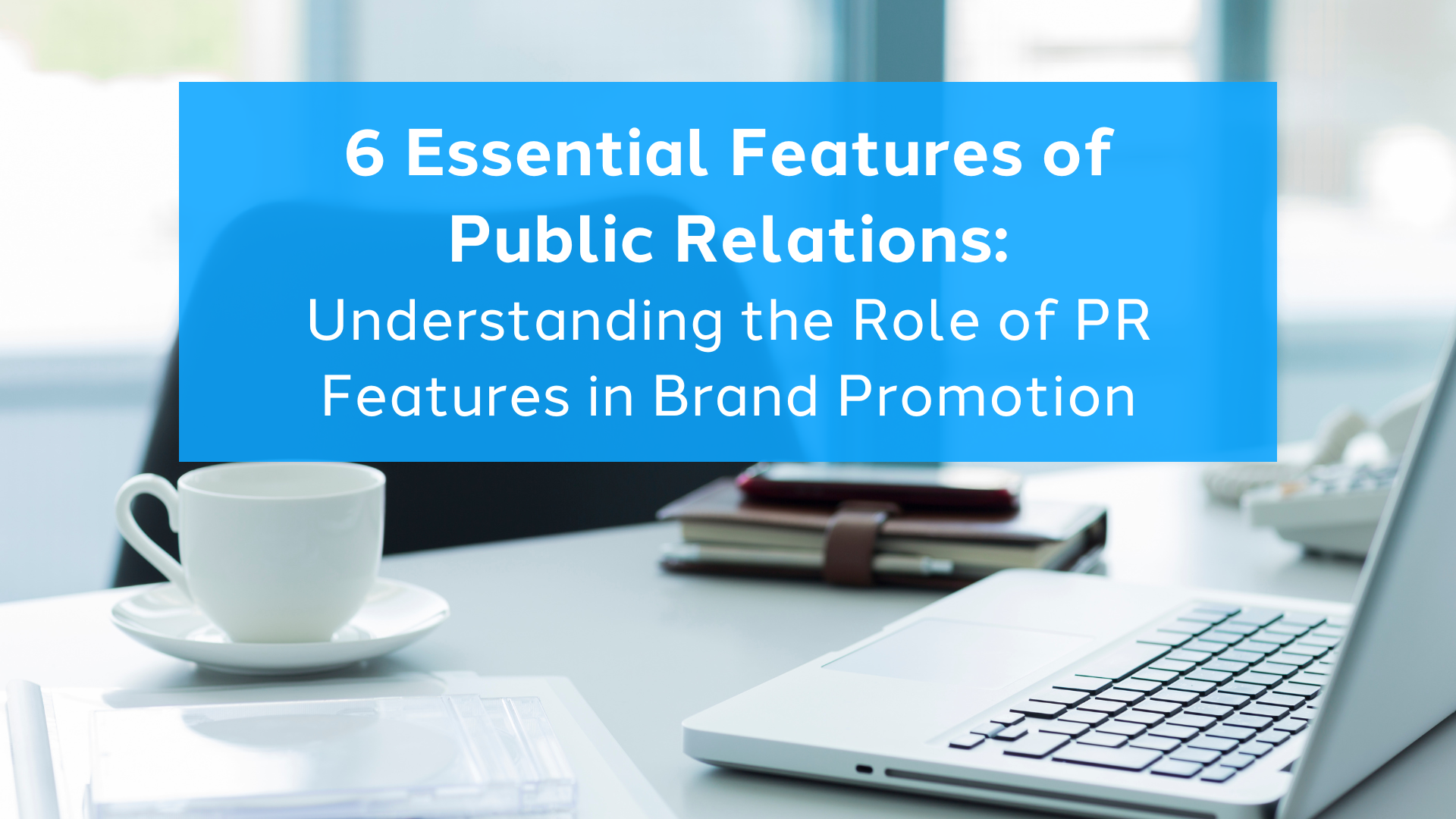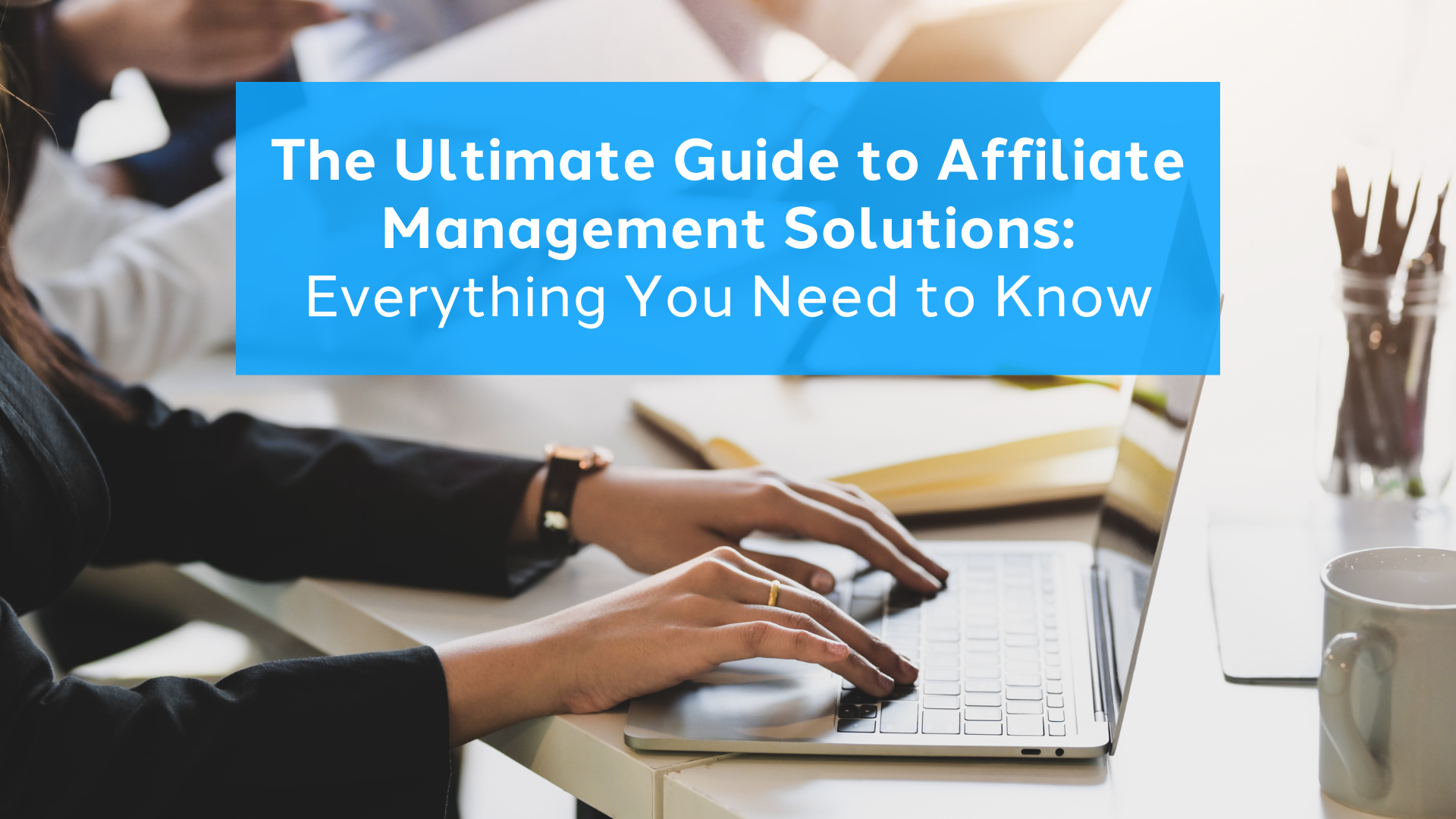Struggling to get your brand noticed? Sponsored posts are a powerful tool in the digital marketing arsenal. This guide will show you how to make sponsored content work for you, boosting brand awareness and engagement.
Get ready for insights that can transform your social media strategy.
Defining Sponsored Posts
Sponsored posts are the way brands pay to get their content in front of a target audience on platforms like Facebook and Instagram. This method stands out from regular posts because it allows companies to reach more people than just their followers.
Differences Between Boosted and Sponsored Posts
Understanding the differences between boosted and sponsored posts is crucial for digital media publishers, marketers, and agencies supporting DTC eCommerce brands. These strategies are pivotal in achieving your digital marketing goals. Below is a direct comparison to guide your strategy effectively.
| Aspect | Boosted Posts | Sponsored Posts |
|---|---|---|
| Definition | Posts already on your timeline that you pay to reach a wider audience. | Ads specifically created to appear in the audience’s feed, marked as “promoted” or “paid”. |
| Target Audience | Limited targeting options, mostly reaching people who like your page and their friends. | Highly customizable targeting options, reaching a specific audience based on detailed criteria. |
| Customization | Minimal customization options for the ad’s appearance and reach. | Extensive customization options for the ad’s format, placement, and messaging. |
| Objective | Primarily boosts engagement on existing posts. | Drives specific marketing goals like website visits, lead generation, or sales. |
| Analytics | Basic analytics to track engagement levels on the boosted content. | Advanced analytics tools to measure performance, including engagement, conversions, and ROI. |
Marketers and publishers should choose the approach that best fits their campaign goals. Boosted posts work well for increasing the visibility of your content. Sponsored posts, on the other hand, are more suited for targeted advertising campaigns designed to drive specific actions. Both strategies can expand audience reach and enhance brand visibility, but understanding their differences helps in deploying them effectively. Use this guide to navigate the options available to you and maximize the impact of your digital advertising efforts.
Key Characteristics of Sponsored Posts
Sponsored posts include various forms, such as social media updates that blend into users’ timelines. Instagram offers promoted posts, which you pay for directly, and paid sponsorships, where you compensate influencers.
Transparency in these ads is crucial; the platform mandates a “Paid Partnership With Sponsor Name” tag to comply with advertising regulations.
Key characteristics of sponsored content involve clarity and authenticity. You can identify evergreen stories clearly labeled as “promoted” or “paid.” These features ensure that target audiences grasp your intention quickly.
Effective sponsored posts enhance user engagement by appealing directly to audience demographics while meeting federal trade commission (FTC) guidelines.
Strategic Importance of Sponsored Posts for Brands
Sponsored posts play a crucial role in expanding your audience reach. These posts boost brand visibility and help you achieve specific marketing goals through targeted efforts.
Expanding Audience Reach
Sponsored posts boost your brand’s audience reach. Platforms like Instagram and LinkedIn allow you to target specific demographics. Use these options to find potential customers who fit your ideal profile.
With a well-placed post, you can connect with users based on job experience, interests, education, and industry specifics. Customizing your message for the right social media platform enhances viewer engagement.
Your marketing strategy should focus on where your audience spends their time. Facebook pages thrive with interactive content while TikTok influencers create buzz through engaging videos.
Utilizing influencer partnerships can strengthen your connection with various user segments. Maximize exposure by consistently improving visibility across multiple social networks.
This approach increases follower count and drives customer engagement effectively.
Enhancing Brand Visibility
Sponsored posts boost your brand’s visibility across social media platforms. They position your brand as a thought leader in your industry. When you create compelling content, you capture the attention of potential customers.
As more people see your posts, they become familiar with your brand name.
Utilize analytics tools to assess engagement rates on different platforms like Instagram or Pinterest. You can refine your approach based on what works best for reaching your target demographic.
Incorporating user-generated content in sponsored posts further enhances visibility and builds trust among consumers.
Driving Specific Marketing Goals
Driving specific marketing goals requires clear focus. You set your campaign goals by determining key performance indicators (KPIs) such as impressions, downloads, or signups. Use these KPIs to guide your strategy and measure success.
Tailor each sponsored post to drive results that matter most to your brand.
Track how well you meet these goals using analytics tools and tracking URLs. Measure engagement through page views, shares, comments, and link clicks. By doing this, you can refine your content strategy for future ad campaigns.
Engaging social media influencers can help amplify your message further and reach a wider audience in targeted markets. Focus on driving the outcomes that align with your business objectives for an effective marketing approach.
Crafting Successful Sponsored Posts
To craft effective sponsored posts, start by choosing the right social media platform. Understand your audience and tailor your content to match their interests. Incorporate clear calls-to-action, which guide readers on what steps to take next.
Focus on authentic messaging that resonates with users and encourages engagement.
Identifying the Right Platform
Selecting the right platform is essential for your sponsored posts. Instagram and LinkedIn offer diverse ad formats that appeal to various audience preferences. On Instagram, you can utilize single image ads, video ads, and engaging reels.
LinkedIn features options such as document ads and carousel ads, which help capture professional attention.
Focus on where your target audience spends their time. Brands aiming for younger demographics might find success on platforms like Instagram or TikTok. For B2B marketing, consider using LinkedIn’s specific content to reach decision-makers effectively.
Understanding these dynamics boosts brand visibility and drives specific marketing goals through strategic planning in social media campaigns.
Tailoring Content to Audience Preferences
To create effective sponsored posts, focus on your audience’s preferences. Understand what engages them most. Use analytics tools to track engagement and conversion metrics. Metrics help you grasp what content resonates with different demographics, including Gen Z.
Customize the message for each social platform. For instance, Instagram sponsored posts may require a more visual approach than X’s promoted ads.
Integrate clear calls-to-action (CTAs) in your content. A strong CTA can drive traffic to a landing page or encourage shares across blogs and social media networks. Keep the language simple and relatable to maintain audience engagement.
Personalized messages increase return on investment by making advertising efforts feel personal and relevant.
Integrating Clear Calls-to-Action
Clear calls-to-action (CTAs) drive user engagement in sponsored posts. Integrating effective CTAs helps you achieve specific marketing goals, such as increasing click-through rates or boosting conversions.
Use simple and direct language that prompts your audience to take action now.
Social media platforms like Instagram offer tools for branded content, making it easy to include CTAs in your posts. Encourage users to visit your website, follow your brand account, or sign up for a webinar with compelling incentives.
As an advertiser, focusing on clear CTAs enhances the return on investment (ROI) of your ad-supported campaigns while strengthening brand partnerships and influencer marketing efforts.
Collaborations and Influencer Partnerships
Partnering with influencers can amplify your brand’s message. Choose creators whose audience matches yours for better results. Create campaigns that benefit both parties involved. Building these connections will enhance your reach and credibility.
To learn more about effective strategies, continue reading!
Selecting Suitable Influencers
Influencer selection plays a crucial role in the success of sponsored posts. Choosing the right Instagram influencer can enhance your brand’s visibility and engagement.
- Evaluate Follower Count
Check the follower count of potential influencers. For instance, influencers with 25,000 to 50,000 followers typically earn between $800 and $1,500 per post. Those with 50,000 to 100,000 followers may charge $1,500 to $2,000.
- Analyze Engagement Rates
Look beyond follower numbers. High engagement rates indicate authenticity. An influencer with fewer followers but strong interaction might deliver better results than one with more followers but low engagement.
- Assess Niche Alignment
Select influencers whose content aligns with your niche. For example, if you promote beauty products, target beauty bloggers or Instagram accounts that focus on skincare and cosmetics.
- Review Content Quality
Inspect the quality of an influencer’s content. Professional images and engaging captions attract more attention from their audience. Ensure their style matches your brand’s voice.
- Check Authenticity
Investigate an influencer’s authenticity and audience demographics using analytics tools like Hootsuite for social media insights. Some influencers buy fake followers; identifying this will save you from wasted expenses.
- Consider Audience Demographics
Examine the demographics of an influencer’s audience. Your target market should overlap with their followers to maximize ad effectiveness.
- Engagement History
Study how past collaborations performed for each influencer. Look for metrics such as likes, shares, or comments on previous sponsored posts to gauge effectiveness.
- Reach out Directly
Contact potential partners through direct messaging (DMs) on platforms like Instagram or via email for a professional approach.
- Establish Clear Goals
Define what you want from the collaboration before engaging an influencer. Whether it’s driving sales or increasing brand awareness, clarity leads to successful partnerships.
Each step in selecting suitable influencers can directly impact your marketing goals in social media marketing campaigns effectively.
Structuring Collaboration for Mutual Benefit
Collaborations create opportunities for both brands and influencers. Strategic partnerships enhance content reach and engagement.
- Choose the Right Partner
Identify influencers who align with your brand values. Consider their audience demographics and engagement levels. Look for creators who have previously worked with advertisers in your industry.
- Establish Clear Goals
Define what each party wants to achieve through the collaboration. Set specific marketing objectives, such as increasing brand awareness or driving conversions. Align on key performance indicators (KPIs) to measure success.
- Develop a Mutual Agreement
Draft an agreement outlining roles, responsibilities, and expectations. Specify deliverables like Instagram stories or blog posts featuring sponsored content. Ensure both parties understand payment structures and timelines.
- Foster Open Communication
Maintain regular contact during the campaign. Discuss progress, address challenges, and share insights frequently to stay aligned. Use messaging apps for quick updates and feedback.
- Share Resources for Content Creation
Provide content creators with information about your brand’s guidelines and messaging. Supply them with high-quality images or product samples to promote effectively on social platforms like Instagram or Reddit.
- Incorporate Transparency Tools
Utilize Instagram’s “Paid Partnership With Sponsor Name” tag for clear disclosures of sponsorships. Transparency builds trust with audiences while adhering to advertising regulations that protect consumers’ interests.
- Evaluate Performance Together
After launching the campaign, assess its impact using analytics tools like Hootsuite or Google Analytics. Review engagement metrics such as likes, shares, comments, and conversion rates together to gauge effectiveness in achieving your shared goals.
By following these steps, you can structure collaborations that bring mutual benefits to your brand and influencer partners while driving specific marketing goals effectively.
Measuring the Impact of Sponsored Posts
You can assess the success of your sponsored posts by using analytics tools to track engagement and conversion rates. Focus on metrics such as clicks, shares, and comments to understand what resonates with your audience.
By analyzing this data, you will identify areas for improvement and refine your approach. These insights help you enhance future campaigns and achieve better results. Explore more ways to maximize your impact!
Using Analytics Tools
Using analytics tools is critical for measuring the return on investment (ROI) of your sponsored posts. These tools provide valuable insights into performance metrics like engagement and conversion rates.
They help you understand how well your content resonates with the audience.
Track specific data points to evaluate each campaign’s effectiveness. This process allows marketers to adjust strategies based on real-time feedback. For instance, using a link shortener can make it easier to analyze click-through rates from different platforms, such as Instagram stories or ads.
Analyzing this data helps you drive better outcomes in future advertising efforts and supports your overall marketing goals.
Evaluating Engagement and Conversion Metrics
To measure the impact of your sponsored posts, track engagement and conversion metrics. Focus on likes, shares, comments, and link clicks. These metrics reveal how well your content resonates with the audience.
They also indicate if you are achieving specific marketing goals like generating leads or increasing brand awareness.
Use analytics tools to analyze data efficiently. These tools help you gauge performance across different platforms. For example, assess your ads on Instagram stories or banner ads in social commerce settings.
This evaluation allows you to refine strategies and maximize your advertising budget effectively.
Scaling Sponsored Posts with the Katalys Marketplace
The Katalys Marketplace offers a streamlined solution for brands and agencies looking to purchase sponsored posts at scale. Through a diverse network of publishers and media opportunities, Katalys enables clients to efficiently access high-quality placements across various platforms, helping you connect with your target audience through strategic, sponsored content.
By leveraging the Katalys Marketplace, brands can:
- Effortlessly Browse Opportunities: With an organized selection of publishers and post types, the Katalys Marketplace allows you to filter by audience, platform, cost, and content format. This enables you to build a scalable campaign strategy without needing to manage each sponsored post individually.
- Tailored Sponsored Content: Customization options let you match your sponsored posts to specific campaign goals, such as increasing brand visibility or driving direct sales. The marketplace allows for detailed targeting, ensuring that each post reaches the right audience with messaging aligned to campaign KPIs.
- Measure ROI with In-Depth Analytics: Advanced reporting features give real-time insights into the performance of each sponsored post, tracking engagement metrics and conversions. These analytics support data-driven adjustments to enhance campaign impact and maximize your advertising budget.
- Expand Reach Across Multiple Channels: The Katalys Marketplace’s extensive media partnerships ensure access to platforms across social media, blogs, and niche websites, providing a comprehensive reach for any campaign. Brands can deploy budget efficiently across a range of digital properties, enhancing overall exposure and engagement.
Whether you’re launching a product or amplifying brand messaging, the Katalys Marketplace simplifies the process of scaling sponsored posts and delivering measurable results.
Conclusion
Creating effective sponsored posts boosts your brand’s visibility. Use clear calls-to-action to engage your audience. Choose the right platform based on your goals. Collaborate with influencers who align with your brand values.
Measure success using analytics tools to refine future campaigns. Implement these strategies, and watch your marketing efforts grow effectively!
FAQs
1. What are sponsored posts and how can they benefit my personal brand?
Sponsored posts are a type of online advertising where you pay to have your content, such as an Instagram story or reel, displayed on platforms like Digg. They can enhance your personal brand by reaching a wider audience.
2. How can I create an effective call-to-action (CTA) in my sponsored post?
An effective CTA should be clear, concise, and persuasive. It’s the part of your advertisement that encourages the viewer to take immediate action – this could be anything from clicking a link to buying a product.
3. Can I use retargeting strategies in my sponsored posts?
Absolutely! Retargeting is an excellent strategy for reminding viewers about your advertisements who’ve previously interacted with them but haven’t converted yet.
4. How do I budget effectively for publishing sponsored posts?
Budgeting for sponsored posts depends on various factors including the platform you’re using and the reach you want to achieve. You need to allocate money wisely based on these considerations and monitor performance regularly.
5. How will my sponsored post reach people’s inbox?
Your sponsored post can reach people’s inboxes through different methods like email marketing or social media notifications if users have opted-in for such updates from you.


